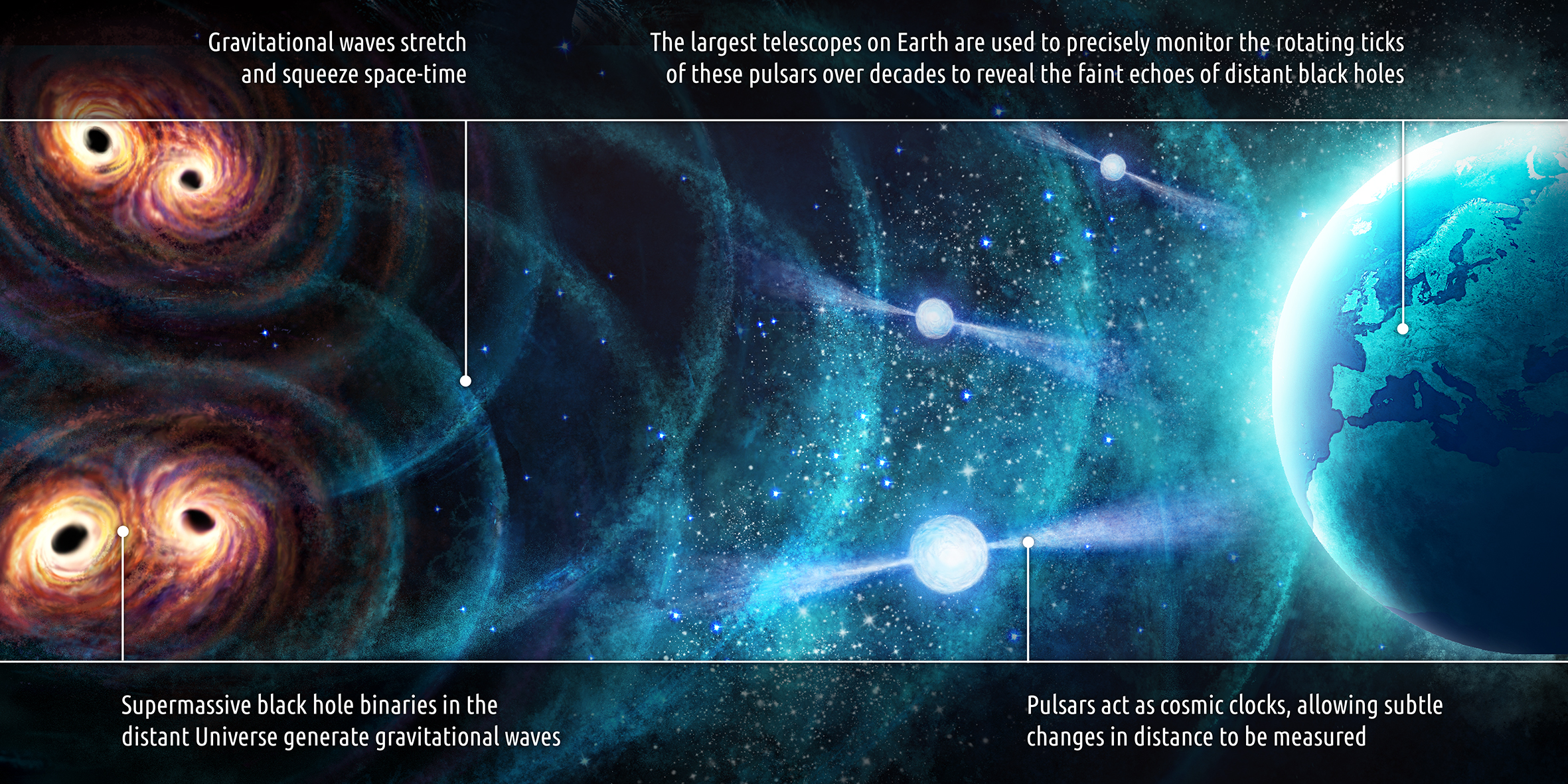Daily Image
30-06-2023Pulsar clocks open new window on gravitational waves
| Submitter: | Gemma Janssen |
| Description: | An international collaboration of European astronomers, together with Indian and Japanese colleagues, have seen evidence for ultra-low-frequency gravitational waves, which is expected to originate from pairs of supermassive black holes found in the centres of merging galaxies. This is the result of more than 25 years of observations with the most sensitive radio telescopes in Europe and India, including the Westerbork Synthesis Radio Telescope (WSRT). In doing so, they have opened a new window on gravitational wave research. These gravitational waves contain information about the universe's best-kept secrets. The research has been published in a series of articles in Astronomy & Astrophysics. The European Pulsar Timing Array (EPTA) was formed in 2006 and is a collaboration of scientists from more than ten institutions across Europe and brings together astronomers and theoretical physicists in order to use observations of ultra-regular pulses from pulsars to construct a gravitational wave detector the size of our Milky Way. From the Netherlands, PhD student Emma van der Wateren (ASTRON/Radboud) and scientists Gemma Janssen and Cees Bassa from ASTRON are involved. The Dutch contribution to the EPTA result is a dataset that was generated of 16 years of monthly pulsar timing observations with the WSRT. The unique feature of the Westerbork dataset is that the signals were recorded also at lower observing frequencies (350MHz) in addition to the more standardly-used higher observing frequencies at 1400 MHZ and higher. This allowed for removing the effects of space weather from the data, making the entire dataset more sensitive to gravitational wave signals. Besides observing pulsars, the EPTA effort also stood at the basis of the development of a new generation of pulsar instruments using a wider bandwith and coherent dedispersion. PuMaII, the first of such instrument was installed at WSRT in 2005, and similar instruments are now used at all European radio telescopes for pulsar observations. Some videos explaining the results are available here: English version, here: Dutch version and here in a news item from RTV Drenthe. Link to the EPTA website with further explanations and the papers that were posted on the ArXiV yesterday and will be published in A&A. |
| Copyright: | Daniëlle Futselaar/MPIfR/artsource.nl |
| Tweet |  |
